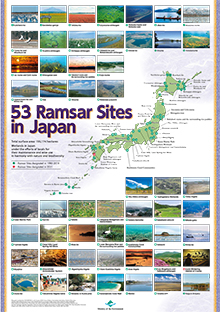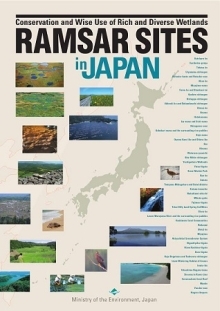Nature & Parks
RAMSAR SITES in JAPAN
When Japan became a contracting party to the Ramsar Convention in 1980, Kushiro-shitsugen became Japan's first Ramsar site. In 1993, Kushiro City hosted the Fifth Meeting of the Conference of the Contracting Parties (COP5) to the Ramsar Convention, greatly raising awareness of the objectives of the Ramsar Convention in Japan and the rest of Asia.
Japan has promoted additional designation of wetlands since then.In July 2025, Lake Inawashiro in Fukushima Prefecture was newly designated as the 54th Ramasar Site in Japan. Ramsar sites in Japan include various types of wetlands such as marshlands, lakes, rice paddies, seagrass/seaweed beds, tidal flats, mangrove forests, coral reefs and groundwater systems, reflecting the diversity of Japan's wetland ecosystem. Most Ramsar sites function as important habitats for waterbirds.
The Ramsar Convention sets the criteria for identifying wetlands of international importance by the Annex II to the Resolution VIII.13 and others. When selecting candidate wetlands for Ramsar sites, Japan sees the following as prerequisites.
- To meet the Convention's criteria for identifying wetlands of international importance;
- To be designated as national protected areas such as national parks and national wildlife protection areas, to ensure that the nature of the sites will be conserved into the future;
- To gain consent and support of the local governments and other stakeholders.
Poster [PDF 1.8MB]

